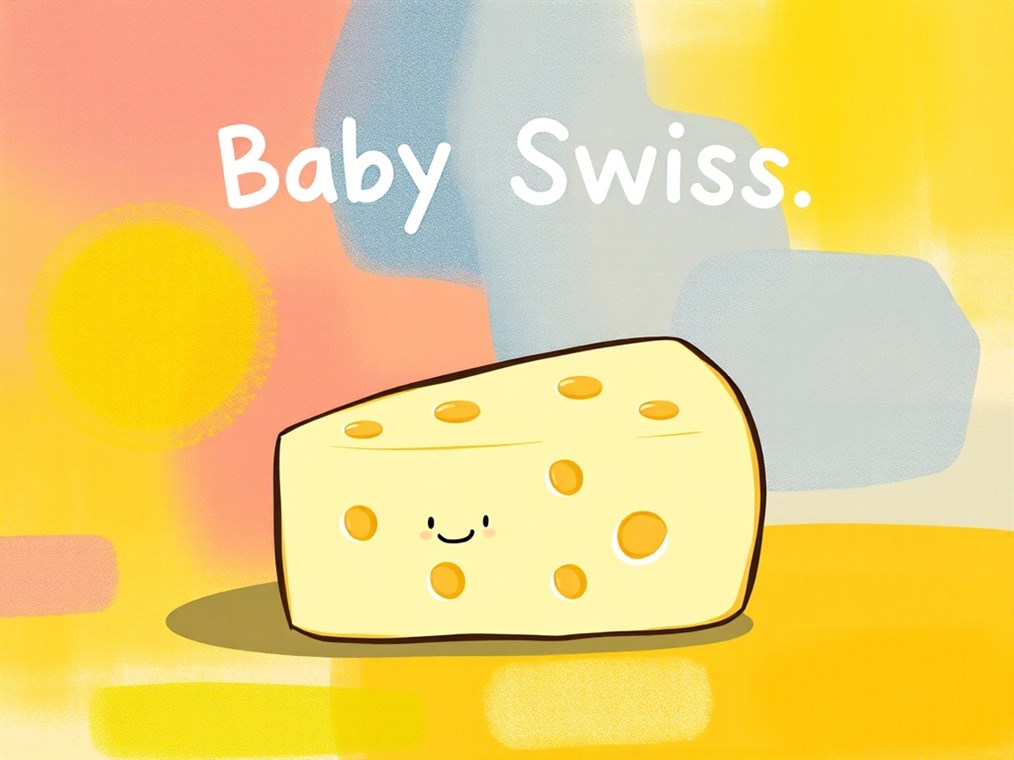Baby Swiss: Aged Cheese, or Just a Baby? Let’s Clear This Up!
So, Baby Swiss cheese, right? We all know it, maybe even love it for its mildness and that oh-so-creamy texture that makes it perfect for a quick sandwich. But have you ever stopped to wonder if it actually goes through the whole aging process like its bigger, bolder Swiss cousin? Well, the short answer is yes, it does! But here’s the thing: it’s more like a quick trip to the spa compared to the full-on retreat that traditional Swiss cheese enjoys.
Think of it this way: aging is what separates a block of cheese from, well, just milk gone solid. Traditional Swiss? That stuff can hang out and mature for months, sometimes even a year or more! Baby Swiss, on the other hand, gets a much shorter stint, usually around a month or so. That’s why it’s so mellow and easy-going.
Now, what is aging anyway? It’s basically the cheese’s version of a makeover. During this time, enzymes are hard at work breaking down proteins, fats, and any lingering lactose. This is where the magic happens, where those complex flavors and aromas we love start to develop.
With Swiss cheese, they even add specific bacteria to the milk, little guys that release carbon dioxide. This creates those iconic “eyes,” or holes, that Swiss cheese is famous for. The longer it ages, the bigger the holes and the nuttier the flavor becomes. You know, the good stuff!
So, how does this all shake out when we compare Baby Swiss to the OG Swiss? Let’s break it down:
- Flavor: Baby Swiss is all about that mild, buttery sweetness. Traditional Swiss? It’s got a bolder, nuttier, almost savory thing going on.
- Texture: Baby Swiss is like a cloud – soft and creamy. Traditional Swiss has a bit more backbone, a slightly firmer, sometimes even crumbly texture.
- Eyes: Remember those holes? Baby Swiss has ’em, but they’re smaller and fewer. Think of it as a subtle wink instead of a wide-eyed surprise.
- Size Matters: Baby Swiss comes in smaller wheels, perfect for a quick snack.
And get this: Baby Swiss is actually an American invention! Back in the mid-1800s, some clever cheesemakers in Wisconsin were trying to figure out how to make a Swiss-style cheese that didn’t need as much time to ripen. They wanted something they could sell faster. And boom! Baby Swiss was born.
So, how do you enjoy this mellow marvel? The possibilities are endless!
- Sandwiches: It’s a classic for a reason. That mild flavor plays well with just about anything.
- Melting: Omelets, frittatas, even mac and cheese – Baby Swiss melts like a dream.
- Salads: Adds a creamy, slightly sweet touch that’s totally unexpected.
- Cheese Boards: Pair it with fruits, nuts, and some cured meats for a simple yet satisfying spread.
Alright, so there you have it. Baby Swiss is aged, just not as long as traditional Swiss. This shorter aging process is what gives it that signature mild flavor, soft texture, and those adorable little holes. So next time you’re reaching for a slice, remember, it’s not just cheese, it’s a little bit of Wisconsin ingenuity! Whether you’re slapping it on a sandwich or melting it into a cheesy masterpiece, Baby Swiss is always a good choice. Enjoy!

